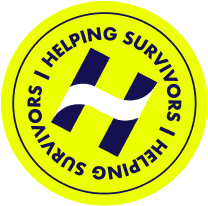Types of Sexual Violence


Author: Kathryn Kosmides
Survivor Advocate
- Sexual violence encompasses a wide range of unwanted sexual acts, from verbal harassment to physical assault, and can impact anyone regardless of gender, age, sex, or other demographics
- Sexual harassment and assault are alarmingly common, with significant physical, emotional, and psychological impacts on victims and their loved ones.
- Survivors have legal rights and options for seeking justice and support, and resources are available to help them navigate the aftermath of sexual violence.
Sexual violence refers to any sexual act or attempt to obtain a sexual favor using coercion in any setting. This includes sexual activity when consent is not obtained or freely given, and it also includes words and actions of a sexual nature against a person’s will.
The spectrum of sexual violence includes all types of unwanted sexual contact, from catcalling to rape. The problem is prevalent all over the world—not just in the U.S.
The WHO reports that internationally, 7% of women have suffered non-partner sexual assault at some point in their lives. Also, more than 1 in 3 women and 1 in 4 men have experienced sexual violence involving physical contact.
Young people are the most likely to experience sexual harassment. Stop Street Harassment reports that 57% of female victims and 42% of male victims experienced harassment before the age of 17.
Sexual Harassment
Sexual harassment consists of unwelcome sexual advances, requests for sexual favors, and other verbal or physical conduct of a sexual nature. A few examples of sexual harassment include:
- Comments or jokes about sex or private body parts
- Using sex- or gender-related name-calling
- Sharing letters, notes, emails, IMs, or online postings that talk about sex
- Comments about sexuality, sexual development, or gender identity
- Harassing anyone for not conforming to social gender norms
- Touching someone’s private body parts in a sexual way
- Pulling at clothing so that others can see or touch a part of someone else’s body
- Physically blocking someone who is trying to get away from sexual harassment
According to a recent study, 81% of women and 43% of men reported experiencing some form of sexual harassment or assault in their lifetime. The most common form of sexual harassment experienced was verbal, followed by being sexually touched in an unwelcome way.
Sexual Assault
While harassment may include touching, verbal comments, and other advances that make someone feel uncomfortable, sexual assault is a more severe type of sexual violence. Anyone can be a perpetrator of sexual assault, including strangers, an intimate partner, or someone else the victim knows.
Examples of sexual assault include:
- Rape
- Child sexual assault and incest
- Assault by a spouse or partner
- Unwanted sexual contact or touching
- Sexual exploitation and trafficking
- Exposing someone’s genitals or naked body to others without consent
- Watching someone engage in private acts without their knowledge or permission
- Sexual Abuse involved in hazing, like in fraternities or sororities
Studies show that nearly one in five women in the United States has experienced rape or attempted rape at some point in their lives. Of those who reported rape, nearly 1 in 3 victims experienced it for the first time between the ages of 11 and 17.
Men Are Also Victims of Sexual Violence
While women experience the highest level of sexual violence, boys and men experience sexual violence as well. Studies have found that nearly 1 in 13 boys experience sexual abuse at some point in childhood. In the United States, almost one in 71 men have experienced rape or attempted rape.
Of those who experienced sexual abuse, 74% of those sexually assaulted were victimized by someone they knew well. One-fifth of those cases were committed by a family member.
If you are not sure where to turn, RAINN can help.
Call 800-656-HOPE (4673) to talk confidentially with a trained professional from RAINN.
They can put you in touch with local resources and organizations that can help in your healing journey.
Child Sexual Abuse
Child sexual abuse in school is a significant yet preventable adverse childhood experience and public health problem. It refers to the involvement of a child in sexual activity that violates the laws.
In many states, children under the age of 18 are not able to legally give consent to sexual activity. They are considered to not have the ability to give informed consent and are not developmentally prepared for sexual activity.
Examples of child sexual abuse include:

- Touching a child’s genitals for sexual pleasure
- Forcing a child to touch someone else’s genitals
- Exposing a child to pornography
- Encouraging a child to perform sexual acts
- Performing sexual acts in a child’s presence
- Photographing a child in sexual poses
- Watching a child undress or use the bathroom
- Using technology to make sexual overtures or expose a child
Approximately 91% of child sexual abuse is perpetrated by someone the child or child’s family knows.
Rape
The Department of Justice defines rape as “the penetration, no matter how slight, of the vagina or anus with any body part or object, or oral penetration by a sex organ of another person, without the consent of the victim.”
While this is the federal definition, each state has its own definition. Nursing home sexual assault and abuse is also another type of sexual violence that is often underreported.
A study by RAINN found that people aged 12 through 34 are at the highest risk for rape and sexual assault. Young women are especially at risk, as 82% of juvenile victims and 90% of adult rape victims are female.
Incest
Incest is the crime of sexual intercourse or cohabitation between people who are related to each other within the degrees wherein marriage is prohibited by law. It is a type of sexual assault.
While studies on incest are not as prevalent since incest is not widely reported, it is believed to occur most often between older male relatives and younger females.
Victims of incest often feel intense shame, which leads to a sense of pressure to keep it a secret. They may be afraid of disrupting the family dynamic or receiving blame or anger from other family members.
Sex Trafficking
Sex trafficking is a type of human trafficking and a form of modern-day slavery. It is a serious public health problem that negatively affects the well-being of individuals, families, and communities. It occurs when a trafficker exploits an individual with force, fraud, or coercion to make them perform commercial sex work.
Any commercial sexual activity with a minor, even without force, fraud, or coercion, is considered trafficking. Statistics show that the average age of entry into the sex trade is 15 years old, with 1 in 6 being under the age of 12.
Impact of Sexual Violence
Sexual violence can have a severe impact on victims and the loved ones around them. Each person has their own individual reaction to sexual violence. The personal style, culture, and context of the survivor’s life may affect their processing of the violence.
Some victims of sexual violence may express their emotions, while others prefer not to. Some may tell others right away, while other victims may wait weeks, months, or even years before discussing the assault, if they choose to do so at all.
It is important to respect each person’s choices and style of coping with this traumatic event. However long ago it may have occurred, it can have an impact on the daily functioning of victims. A wide range of reactions may occur.
Impact of Sexual Violence on Victims
The impact of sexual violence on victims can be quite severe. It can result in a myriad of serious problems—emotionally, physically, and psychologically.
Emotional
Effects
Common emotional reactions for those who have experienced sexual violence may include:
- Guilt, shame, and self-blame
- Embarrassment
- Fear and distrust
- Sadness
- Vulnerability
- Isolation
Those suffering from emotional trauma may have difficulty forming and maintaining relationships. They may be reluctant to spend time with others or experience periods of sadness.
Psychological
Effects
Psychological reactions can vary depending on how the victim processes the stress. Common psychological responses include:
- Nightmares
- Flashbacks
- Depression
- Difficulty concentrating
- Post-traumatic stress disorder
All of these symptoms can cause difficulty in maintaining normal day-to-day functioning.
Physical
Effects
Physical reactions that occur as a result of sexual violence may include:
- Changes in eating or sleeping patterns
- Increased startle response
- Concerns about physical safety
- Anger
- Numbness and confusion
- Anxiety
- Eating disorders or substance use and abuse
Other potential physical consequences of sexual violence include pregnancy or contracting an STI, such as HIV.
Victim's Loved Ones
Similar to the victims themselves, sexual violence can have an impact on the victim’s loved ones. Individuals who may be affected can include parents, siblings, children, and extended family.
Loved ones of victims may also encounter similar emotional, psychological, or physical problems. Part of what makes it so difficult for loved ones is not knowing what to say or do. However, there are ways to offer constructive help and support.
Many times, disclosure may be met by skepticism or disbelief. Letting a survivor know that you believe them and stand behind them is powerful support. Although you may have a strong reaction to what happened, it’s important to focus on the feelings and reactions of the survivor rather than your own.
The Cost of Sexual Violence
The cost of sexual violence is high. Studies show that the estimated lifetime cost of rape was $122,461 per victim. This includes medical expenses, loss of income, expenses associated with seeking justice, and other costs.
If you or someone you know has experienced sexual violence and needs help, contact the National Sexual Assault Hotline at 800.656.HOPE (4673) to talk to a trained professional for help.
Want To Speak With A Lawyer?




